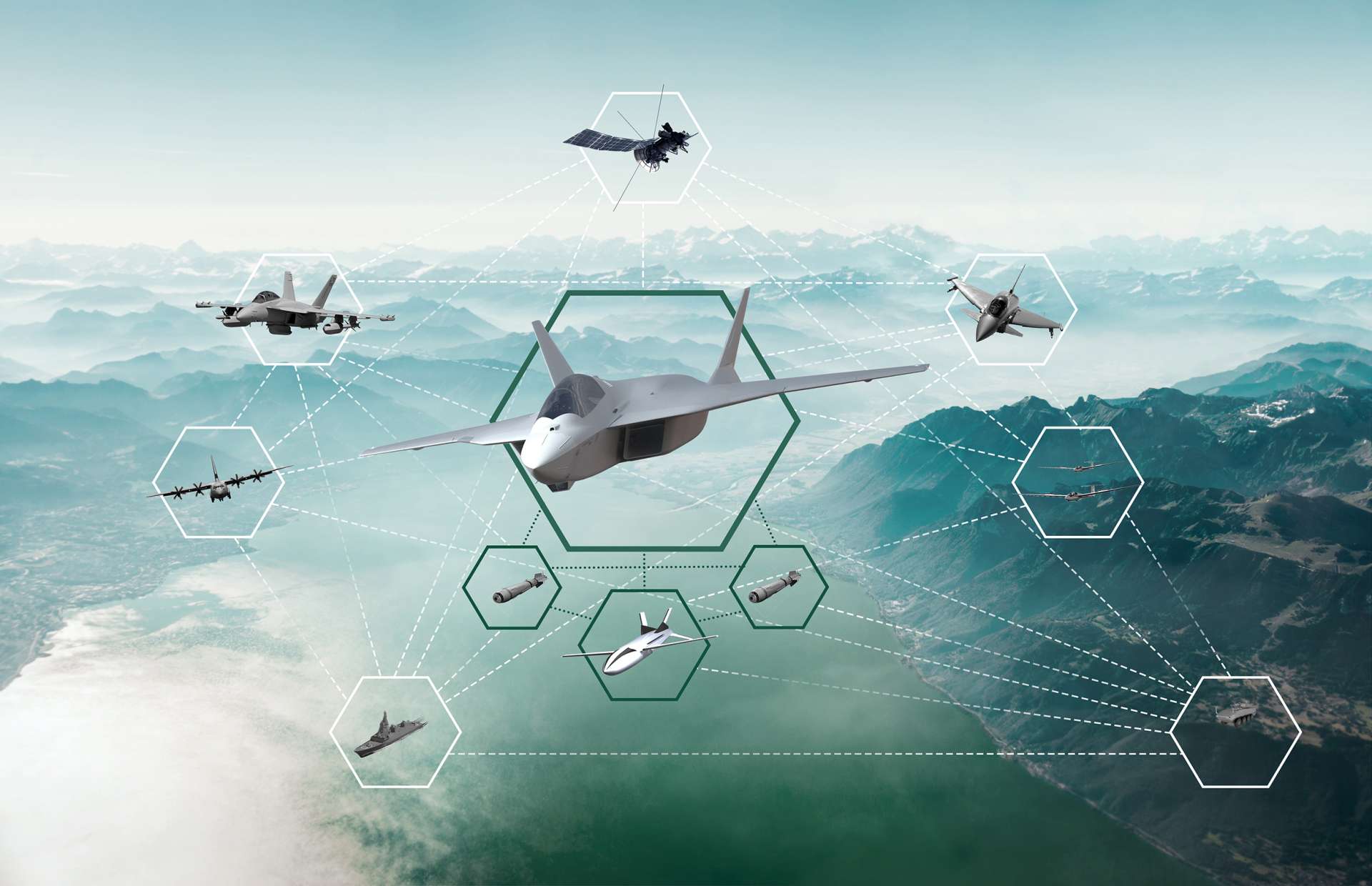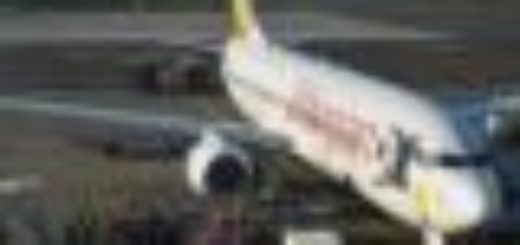Why tensions between France and Germany could delay FCAS sixth-generation fighter program?
{loadposition bannertop}
{loadposition sidebarpub}
According to information published by Reuters, on August 26, 2025, a German defense ministry report revealed that France is effectively blocking the progression of the tri-national Future Combat Air System (FCAS) by demanding 80% of the workshare, in other words, the exclusive leadership of the program. German officials have warned that such concessions would weaken both the technical capabilities of the aircraft and the industrial participation of German partners, placing Europe’s most ambitious defense project in jeopardy.Follow Army Recognition on Google News at this link
The FCAS sixth-generation fighter is designed with stealth shaping, advanced avionics, supercruise capability, and networked integration with unmanned drones through a combat cloud architecture (Picture source: Thales).
The Future Combat Air System was first announced in 2017 as a joint French-German initiative to ensure Europe retained independent next-generation fighter development capabilities. Spain formally joined the program in 2019. The first public model of the system was unveiled at the Paris Air Show in 2019, showcasing a stealthy, twin-engine aircraft with a low-observable profile. The program has been structured into six main development pillars: the manned next-generation fighter, an advanced propulsion system, remote carrier drones, a combat cloud digital architecture, sensors and avionics, and the overall system integration. Each pillar was originally designed to be co-led by different national industries to balance responsibilities across the three countries.
FCAS is conceived as more than a single aircraft. At its core lies the sixth-generation manned fighter, expected to incorporate stealth shaping, radar-absorbing materials, advanced sensor fusion, and an open mission system architecture to allow for continuous upgrades. The aircraft will be capable of supercruise without afterburners, high levels of connectivity, and advanced electronic warfare systems. Complementing the fighter will be unmanned remote carriers, small to medium-sized drones deployable in swarms to extend sensing coverage, deliver precision strikes, or perform electronic attack missions. These assets will all be connected through the combat cloud, a secure data-sharing network designed to link satellites, ground systems, and other allied platforms in real time. The propulsion system, currently being developed by Safran and MTU Aero Engines, is projected to deliver significantly higher thrust-to-weight ratio, thermal efficiency, and power generation capacity compared to current European fighter engines. Demonstrator testing of engine cores has already begun, with full-scale testing scheduled for the early 2030s.
Since the start, the program has faced recurring tensions over governance. Dassault Aviation was designated the prime contractor for the manned fighter pillar, while Airbus Defence and Space was tasked with supporting roles and leading other domains such as remote carriers and the combat cloud. Indra was appointed as the Spanish lead company with responsibility for sensors and electronic systems, working alongside Thales in France and Hensoldt in Germany. Safran and MTU were paired for the propulsion system, though disagreements over intellectual property rights slowed early progress. Airbus has repeatedly called for a more balanced distribution of tasks, while Dassault insists that its expertise with the Rafale justifies its leadership role. France’s reported demand for approximately 80 percent of leadership responsibilities would reduce the German and Spanish share of the program, undermining the initial tri-national balance.
For European defense, the stakes are considerable. The FCAS is designed not only to replace the Rafale and Eurofighter Typhoon by 2040 but also to ensure that Europe maintains sovereign capabilities in designing and producing advanced combat aircraft. Without such a system, European nations would face the risk of dependence on American or non-European platforms beyond the middle of the century. At the industrial level, the program is valued at nearly €100 billion and is expected to support tens of thousands of high-technology jobs across France, Germany, and Spain. It also represents Europe’s answer to parallel sixth-generation efforts such as the United States Next Generation Air Dominance (NGAD) program and the Global Combat Air Programme (GCAP), developed by the United Kingdom, Italy, and Japan. A failure to deliver FCAS on time could leave Europe at a technological disadvantage in the coming decades.
Several difficulties could still derail the program. France argues that Dassault must retain sole control of the manned fighter pillar due to its proven track record in designing combat aircraft independently. Airbus, on the other hand, contends that the aircraft must reflect a balanced multinational partnership, with contributions in design and systems integration shared across nations. Beyond leadership disputes, the technical challenges are significant. Achieving seamless integration of manned and unmanned systems through the combat cloud requires breakthroughs in secure data transmission, artificial intelligence, and network resilience under electronic attack. Developing an engine capable of sustaining high performance while meeting strict stealth and thermal management requirements will also test European industry. Budgetary constraints, the need to synchronize national defense planning cycles, and export policy differences among partner countries represent further risks to the program’s timeline.
Currently, the program is expected to enter Phase 2, which involves constructing demonstrators for the fighter, remote carriers, and the combat cloud system. These demonstrators are planned for flight testing in the early 2030s, but any delays in reaching agreement between France, Germany, and Spain could postpone funding allocations and shift the entire timeline. If the dispute continues unresolved, the FCAS risks missing its 2040 in-service target, undermining its objective to provide Europe with a competitive sixth-generation air combat capability.
In comparison, the rival Global Combat Air Programme (GCAP), led by the United Kingdom in partnership with Italy and Japan, is advancing under a different structure. GCAP was launched in 2022 as the merger of the British Tempest and Japanese F-X programs, with a clear division of labor between BAE Systems, Leonardo, Mitsubishi Heavy Industries, Rolls-Royce, and IHI Corporation. Unlike FCAS, GCAP has avoided major disputes over leadership and has already begun testing key subsystems, including advanced radar prototypes, adaptive cycle engines, and manned-unmanned teaming technologies. Its partners have committed to delivering a first demonstrator flight by 2027, significantly earlier than FCAS, with the target of introducing the system by the mid-2030s. While both programs emphasize stealth, connectivity, and unmanned teaming, GCAP’s shorter timeline and streamlined governance highlight the importance of industrial cohesion. The divergence between FCAS and GCAP underscores the stakes for Europe. If FCAS continues to face delays, the United Kingdom and its partners could field their sixth-generation system years ahead of continental Europe, capturing both operational advantage and a larger share of the global export market for next-generation fighters.

{loadposition bannertop}
{loadposition sidebarpub}
According to information published by Reuters, on August 26, 2025, a German defense ministry report revealed that France is effectively blocking the progression of the tri-national Future Combat Air System (FCAS) by demanding 80% of the workshare, in other words, the exclusive leadership of the program. German officials have warned that such concessions would weaken both the technical capabilities of the aircraft and the industrial participation of German partners, placing Europe’s most ambitious defense project in jeopardy.
Follow Army Recognition on Google News at this link
The FCAS sixth-generation fighter is designed with stealth shaping, advanced avionics, supercruise capability, and networked integration with unmanned drones through a combat cloud architecture (Picture source: Thales).
The Future Combat Air System was first announced in 2017 as a joint French-German initiative to ensure Europe retained independent next-generation fighter development capabilities. Spain formally joined the program in 2019. The first public model of the system was unveiled at the Paris Air Show in 2019, showcasing a stealthy, twin-engine aircraft with a low-observable profile. The program has been structured into six main development pillars: the manned next-generation fighter, an advanced propulsion system, remote carrier drones, a combat cloud digital architecture, sensors and avionics, and the overall system integration. Each pillar was originally designed to be co-led by different national industries to balance responsibilities across the three countries.
FCAS is conceived as more than a single aircraft. At its core lies the sixth-generation manned fighter, expected to incorporate stealth shaping, radar-absorbing materials, advanced sensor fusion, and an open mission system architecture to allow for continuous upgrades. The aircraft will be capable of supercruise without afterburners, high levels of connectivity, and advanced electronic warfare systems. Complementing the fighter will be unmanned remote carriers, small to medium-sized drones deployable in swarms to extend sensing coverage, deliver precision strikes, or perform electronic attack missions. These assets will all be connected through the combat cloud, a secure data-sharing network designed to link satellites, ground systems, and other allied platforms in real time. The propulsion system, currently being developed by Safran and MTU Aero Engines, is projected to deliver significantly higher thrust-to-weight ratio, thermal efficiency, and power generation capacity compared to current European fighter engines. Demonstrator testing of engine cores has already begun, with full-scale testing scheduled for the early 2030s.
Since the start, the program has faced recurring tensions over governance. Dassault Aviation was designated the prime contractor for the manned fighter pillar, while Airbus Defence and Space was tasked with supporting roles and leading other domains such as remote carriers and the combat cloud. Indra was appointed as the Spanish lead company with responsibility for sensors and electronic systems, working alongside Thales in France and Hensoldt in Germany. Safran and MTU were paired for the propulsion system, though disagreements over intellectual property rights slowed early progress. Airbus has repeatedly called for a more balanced distribution of tasks, while Dassault insists that its expertise with the Rafale justifies its leadership role. France’s reported demand for approximately 80 percent of leadership responsibilities would reduce the German and Spanish share of the program, undermining the initial tri-national balance.
For European defense, the stakes are considerable. The FCAS is designed not only to replace the Rafale and Eurofighter Typhoon by 2040 but also to ensure that Europe maintains sovereign capabilities in designing and producing advanced combat aircraft. Without such a system, European nations would face the risk of dependence on American or non-European platforms beyond the middle of the century. At the industrial level, the program is valued at nearly €100 billion and is expected to support tens of thousands of high-technology jobs across France, Germany, and Spain. It also represents Europe’s answer to parallel sixth-generation efforts such as the United States Next Generation Air Dominance (NGAD) program and the Global Combat Air Programme (GCAP), developed by the United Kingdom, Italy, and Japan. A failure to deliver FCAS on time could leave Europe at a technological disadvantage in the coming decades.
Several difficulties could still derail the program. France argues that Dassault must retain sole control of the manned fighter pillar due to its proven track record in designing combat aircraft independently. Airbus, on the other hand, contends that the aircraft must reflect a balanced multinational partnership, with contributions in design and systems integration shared across nations. Beyond leadership disputes, the technical challenges are significant. Achieving seamless integration of manned and unmanned systems through the combat cloud requires breakthroughs in secure data transmission, artificial intelligence, and network resilience under electronic attack. Developing an engine capable of sustaining high performance while meeting strict stealth and thermal management requirements will also test European industry. Budgetary constraints, the need to synchronize national defense planning cycles, and export policy differences among partner countries represent further risks to the program’s timeline.
Currently, the program is expected to enter Phase 2, which involves constructing demonstrators for the fighter, remote carriers, and the combat cloud system. These demonstrators are planned for flight testing in the early 2030s, but any delays in reaching agreement between France, Germany, and Spain could postpone funding allocations and shift the entire timeline. If the dispute continues unresolved, the FCAS risks missing its 2040 in-service target, undermining its objective to provide Europe with a competitive sixth-generation air combat capability.
In comparison, the rival Global Combat Air Programme (GCAP), led by the United Kingdom in partnership with Italy and Japan, is advancing under a different structure. GCAP was launched in 2022 as the merger of the British Tempest and Japanese F-X programs, with a clear division of labor between BAE Systems, Leonardo, Mitsubishi Heavy Industries, Rolls-Royce, and IHI Corporation. Unlike FCAS, GCAP has avoided major disputes over leadership and has already begun testing key subsystems, including advanced radar prototypes, adaptive cycle engines, and manned-unmanned teaming technologies. Its partners have committed to delivering a first demonstrator flight by 2027, significantly earlier than FCAS, with the target of introducing the system by the mid-2030s. While both programs emphasize stealth, connectivity, and unmanned teaming, GCAP’s shorter timeline and streamlined governance highlight the importance of industrial cohesion. The divergence between FCAS and GCAP underscores the stakes for Europe. If FCAS continues to face delays, the United Kingdom and its partners could field their sixth-generation system years ahead of continental Europe, capturing both operational advantage and a larger share of the global export market for next-generation fighters.






